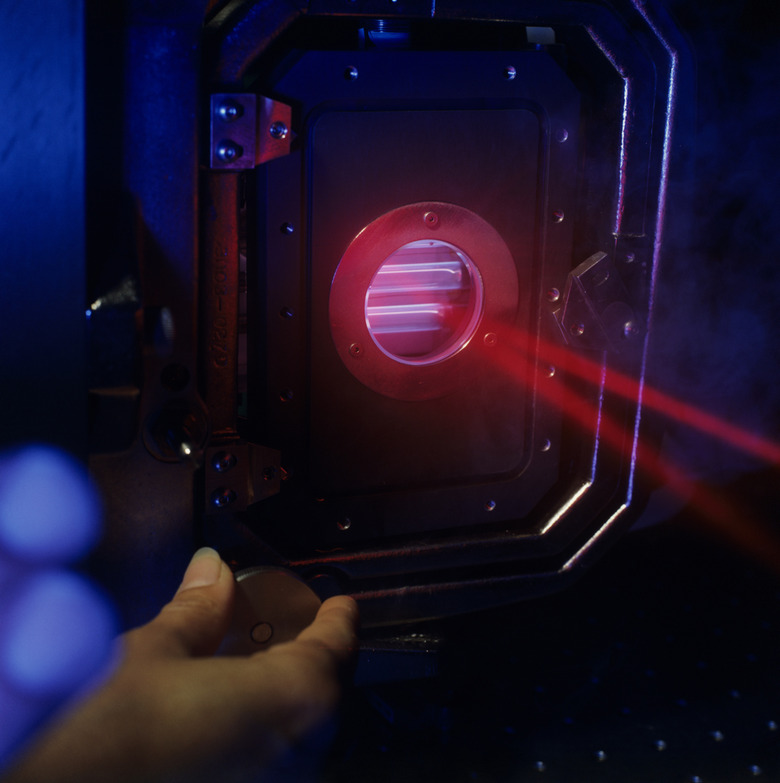How Do Holographic Projectors Work?
Holographic projectors use holograms rather than graphic images to produce projected pictures. They shine special white light or laser light onto or through holograms. The projected light produces bright two- or three-dimensional images. While plain daylight lets you see some simple holograms, true 3-D images require laser-based holographic projectors. You can view such images from different angles and see them in true perspective. Miniature versions of such projectors are in development. Using such a projector, a smartphone could create an image for the viewer in an empty space rather than on a small screen.
Holograms
Holograms
The key to the operation of holographic projectors is the hologram. Before the advent of digital imaging, holograms were patterns on film. The photographer took a single source of light and split it into two. Half illuminated the subject and half went directly to the film, creating an interference pattern with the light reflected from the subject. A holographic projector used a similar light and the film to recreate an image of the subject.
Imaging
Imaging
By 2004, digital displays were able to create such interference patterns and take the place of the hologram on film. This meant that companies could start work on projecting videos on holographic projectors. The projector shines lasers or pure white light through a digital display that is programmed with interference patterns corresponding to a series of images. The process creates an image in front of the projector by passing the light through the interference pattern.
Projection
Projection
In traditional projectors, light passes through a graphical image that blocks some of the light to create shading, and lets only some colors through to color the projected picture. Holographic projectors generate the projected image by refraction through the interference pattern, losing hardly any light, and operating much more efficiently. They can be very small and generate very little heat. This makes them ideal for eventual applications in mobile electronic devices, for which power and space are limited.
Color
Color
A hologram or a digital holographic interference pattern works only with one color, since the interference pattern comes from the interference from a single wavelength of light. To obtain color, holographic projectors have to use colored lasers that illuminate the corresponding interference patterns for their colors. As of January 2012 such holographic projectors are in the development stage.
True 3-D
True 3-D
A simple holographic projector with a light source shining through a flat interference pattern can produce an image that has three-dimensional qualities, but it is still flat. To create a true 3-D image, a holographic projector can use a spinning mirror to reflect the image to the observer. The mirror sends an image corresponding to the angle from which the observer is viewing the subject. As the observer moves around the subject he views it in different perspectives, and sees a three-dimensional image floating in space.
Cite This Article
MLA
Markgraf, Bert. "How Do Holographic Projectors Work?" sciencing.com, https://www.sciencing.com/holographic-projectors-work-12226294/. 13 March 2018.
APA
Markgraf, Bert. (2018, March 13). How Do Holographic Projectors Work?. sciencing.com. Retrieved from https://www.sciencing.com/holographic-projectors-work-12226294/
Chicago
Markgraf, Bert. How Do Holographic Projectors Work? last modified March 24, 2022. https://www.sciencing.com/holographic-projectors-work-12226294/
